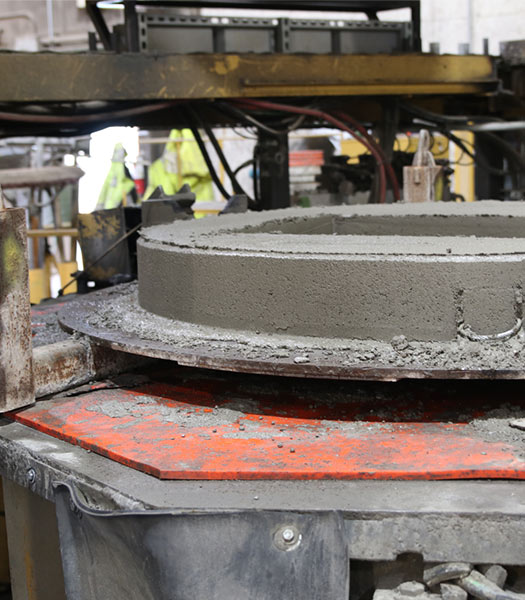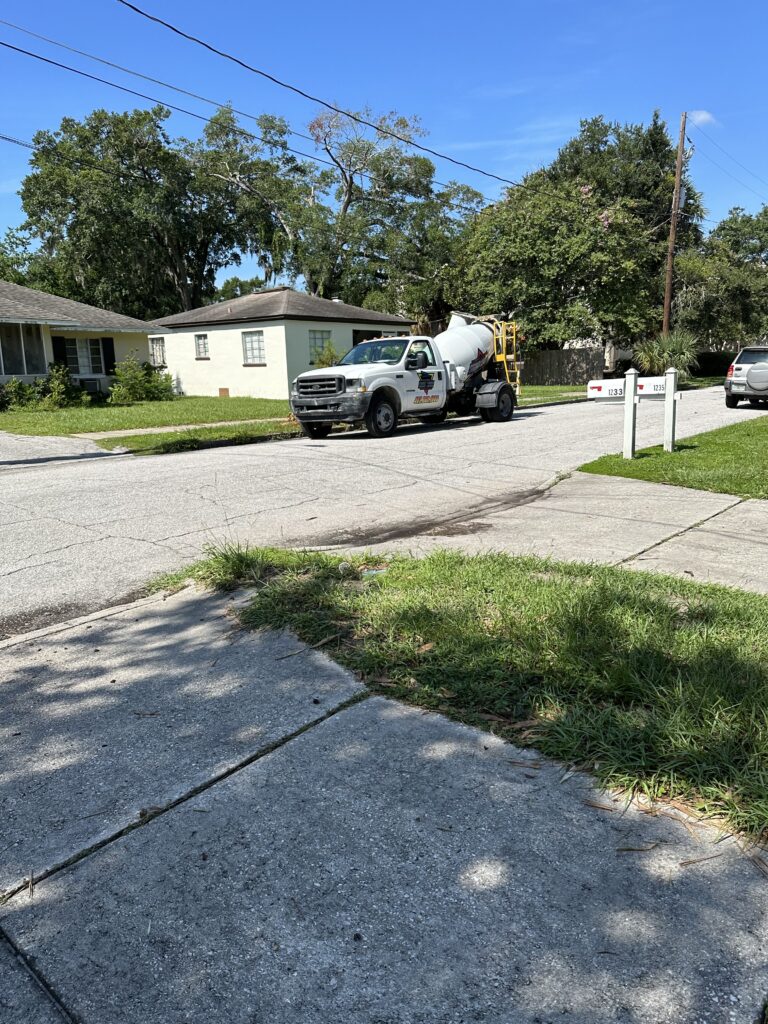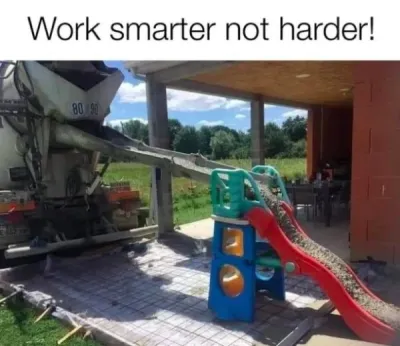
Buying Used Concrete Equipment? Beware of Hidden Liens
Purchasing used equipment is not as easy as it appears, especially when from a private seller or not an authorized dealer. Learn more:
Complete guide for installing the CONFAST® 1/4″-20 x 2-1/4″ Male Hurricane Anchoring Kit for Storm Panels, Plywood and Metal Panels (25 Sets, 1 Driver, Total 76 Pieces) Buy now: https://www.confast.com/HAM14214
CONFAST 1/4″-20 x 2-1/4″ Male Hurricane anchors install quicker and more efficiently than other storm protection anchoring products. For concrete and concrete block applications, drill pilot hole and drive the anchor in, it’s that easy. Pre-drilling is not required in wood base materials. Full thread engagement in concrete, concrete block and wood is required for best performance. Stucco-faced surfaces usually require countersinking so that the top of the hurricane anchors set flush to the stucco surface, allowing for full thread engagement in the base material All CONFAST hurricane anchor installations are required to be compliant with the shutter/panel manufacturer’s spacing, alignment and build-out requirements. Hurricane Anchor Kit includes 25 sets of anchors, wing nuts, and anchor protectors Kit contains 1 driver Made of Carbon Steel w/ White Ruspert Coating Install one time, the anchors stay in place to make future panel mounting faster and easier Use 7/32″ bit in Concrete, 3/16″ bit in Concrete Block Uses standard 1/4-20 hardware
In this episode of The Concrete Edge on Deco-Crete TV, Jeff dives into the crucial topic of how much slope to incorporate into exterior concrete projects. Jeff shares valuable insights and practical tips for determining the right amount of slope for your concrete patio, porch, or outdoor space. From understanding different types of concrete slabs to navigating the complexities of stamped concrete, Jeff provides expert guidance to help you achieve optimal results. Whether you’re a seasoned contractor or a DIY enthusiast, this episode offers essential knowledge for anyone working with outdoor concrete.

Durex Products offers Precast Equipment Liners
We design and build numerous high-performance wear parts and liners for the precast industry, including, but not limited to, the following: Liners for vibrating tables, which greatly reduces noise. Learn more: https://durexproducts.com/products/concrete-products/precast-equipment-liners/
Rise of the Machines
Robots and automated tools are already transforming construction sites. Automated masonry tools can dramatically increase the speed of construction—one prototype robot can lay 1,000 bricks per hour, for instance, while reducing the need for human workers to haul heavy pallets of brick or mortar around worksites. Autonomous vehicles and “driverless dozers” are also starting to break through, promising to allow heavy equipment to complete risky tasks while keeping humans safely out of harm’s way.
Other technologies are already widely utilized: drones, for instance, are used on at least 37% of construction sites, and they can significantly reduce the need for human workers to climb to high areas for inspections. With falls from dangerous heights accounting for more than a third of fatal construction accidents, that’s a big deal. There’s also the potential for drone-mounted sensors to help detect heat signatures to prevent fires as well as dangerous equipment malfunctions, and in commercial spaces, robots are being used to detect slip-and-fall hazards. We need to make similar automated preventative measures ubiquitous on construction sites.
The benefits of such tools are obvious. Automating high-risk activities is a huge net win for construction workers, who will increasingly be able to work remotely on dangerous tasks. Many injuries—sometimes fatal—can be traced back to human error, and the human element is one factor an automated system, working with precision and consistency, can completely eliminate. As long as a robotic system is configured correctly, it won’t make mistakes—and if something does go wrong, it will be replaceable equipment, not human workers.
Don’t Take Safety for Granted
But it’s not all good news. Many construction workers say they find it distracting to work alongside drones, and there’s evidence that even when drones are operating at a considerable distance from humans they often lead workers to look away from their tasks. To use drones safely, we’ll need to manage their use and ensure they’re deployed in ways that coordinate with human workers and enable teams to operate safely and confidently across a range of worksite settings.
New technologies such as robot exoskeletons are also a mixed blessing: they can significantly reduce the wear-and-tear on human muscle and bone, making many workplace injuries less prevalent, but any technology that helps a single human lift 1,000 pounds brings potential dangers, too. These new capabilities bring new risks, and require proper training and new safety protocols to ensure their safe use.
It’s important to remember that worksite automation is also about increasing productivity. If a new tool or technology lets a worker complete a task single-handed, that’s great–but sometimes having fewer people working on a given task can make it easier for mistakes to go unnoticed. We’ll need proper planning and checklists, delivered and tracked seamlessly using digital tablets and other systems, to ensure that automation doesn’t increase the risk of potentially dangerous oversights.
A Safer Future for Construction Teams
The reality, then, is that robots will bring both potential benefits and new risks to construction worksites. To capture those benefits and manage those risks, we’ll need to be proactive about integrating new technologies into our worksites and our workflows in smart and responsible ways.
That will mean ensuring that we don’t simply patch together new technologies and expect them to work seamlessly and safely without any central oversight. In an era that will increasingly be defined by new construction technologies, we need to make sure that we have full visibility into the processes, equipment, and people across our worksites.
It might help to take a look at manufacturing, where industrial robots and automated systems are now par for the course. To keep track of factories, plant managers use “virtual twins” that digitally track every aspect of the equipment they’re using—from the rpm of a given motor, to the locations of specific workers or automated vehicles, to the temperature on the factory floor. That allows factories to operate more efficiently, but it also provides a layer of centralized oversight and communication that helps keep everyone safe.
If we are to be as successful with new technology as they are in the manufacturing sector, we’ll need proper training and education for construction teams, who will increasingly have to be knowledge workers as well as manual laborers. Using robotic tools and working alongside automated equipment, work crews will need to be able to follow safety guidelines and processes for using sophisticated tools in real time. Making that process easy and seamless for human workers will be vital to ensuring that teams work safely and efficiently, while also overcoming any potential resistance they may have to using automated tools.
As we begin to introduce new automated and robotic technologies, we need to remember that construction worksites are complex places where humans and machines come together to get the job done. Using digital tools for education, training, worksite management, risk prediction and mitigation, asset tracking, communication, and related purposes will be essential as we strive to make construction sites the safest they can possibly be for their workers. https://www.forconstructionpros.com/business/construction-safety/article/22889016/planradar-robots-are-rewriting-the-rules-of-construction-safety


Concrete Wedge Anchor – Light to Heavy-duty concrete anchor/fastener for solid concrete base material.
Commonly called:
Wedge anchor, stud anchor, kwik-bolt, thunderstud, thunderstuds, wedge anchors, DFS wedge anchor, sup-r-stud, kwik bolt II anchor, Hilti kwikbolt, kwik bolt, concrete stud anchor, stud wedge anchor, stud anchor system, power bolt, power stud, trubolt, redi bolt, wedge all, kingpin
Description:
Two pieces, permanently pre-assembled into a single unit make up the ThunderStud® wedge anchor. A portion of the rod’s length is threaded and protected from damage by the rounded design of its extreme end. A necked down diameter that tapers outwardly to the full diameter of the rod makes up the other end. The unit has a carbon steel, precision formed universal clip permanently assembled around the necked down diameter. Packages of Thunderstud® Concrete Wedge Anchors always contain the correct number of nuts and washers. The Concrete Wedge Anchor is also available in hot-dipped galvanized and stainless steel.
Common variations and misspellings:
Quick bolt, thunder stud, super stud, quick bolt II anchor, powerbolt, powerstud, true bolt, ready bolt, king pin, superstud
A little concrete humor for you…






